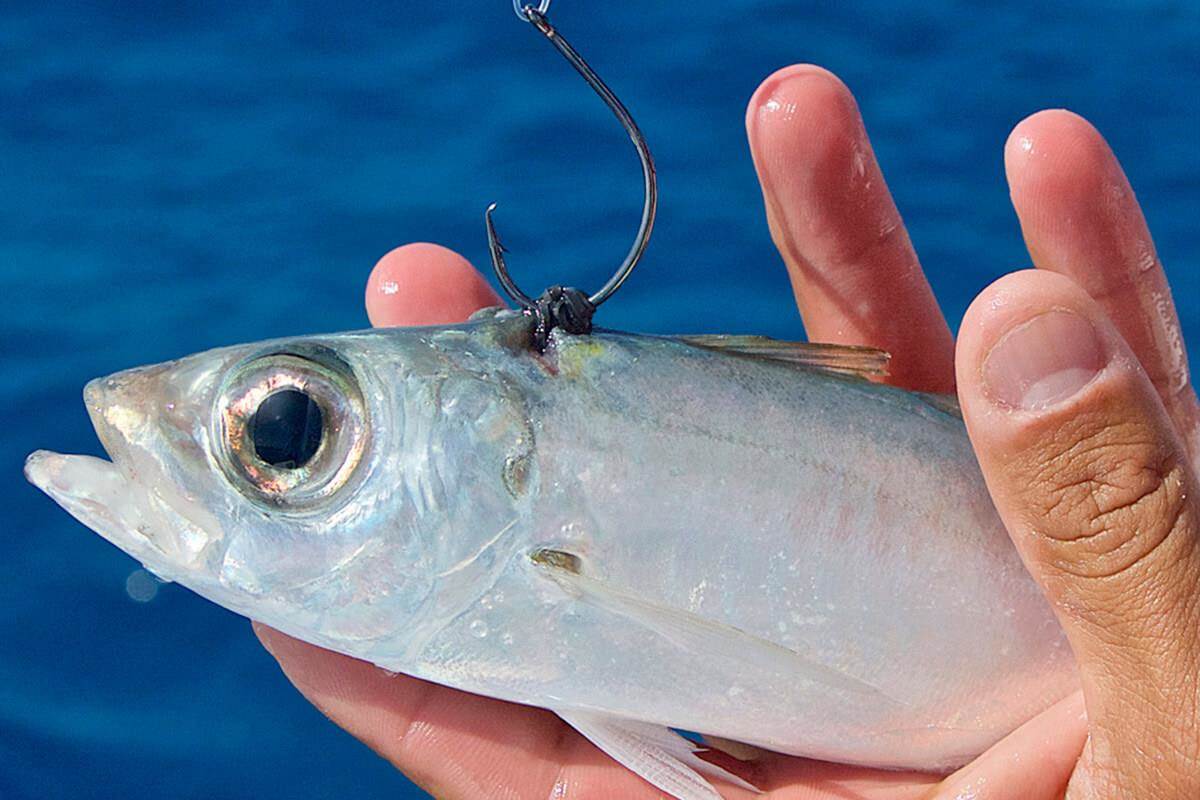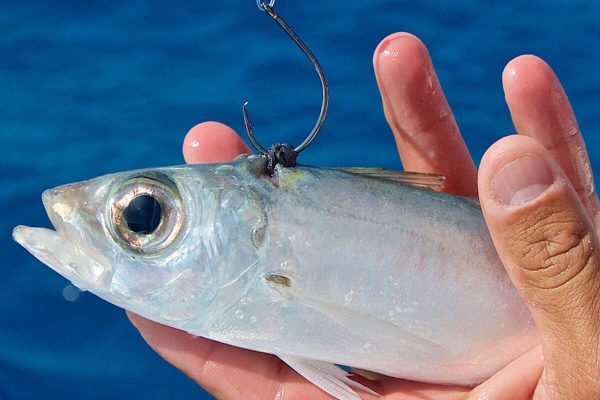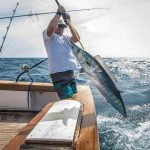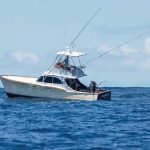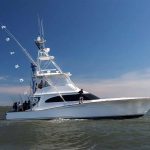Article Courtesy: floridasportsman.com | Originally Published: 3/30/23 | Please click here for original article.
Let’s take a look at various popular types fishing hooks, here are some styles we recommend and why.
When it comes down to it, the fishing hook is the fundamental and most necessary piece of equipment we use when fishing. With no hook, the chances of catching a fish pretty much vanish. There are hundreds of variations of fishing hooks, each designed with specific needs in mind, but even within the many kinds of hooks available to anglers, there are trends that distinguish different preferred uses of hooks. For example, many anglers in Florida have become reliant on circle hooks for many applications. Sometimes these trends are influenced by local regulations, like Florida’s requirement that anyone fishing for any species of reef fish in Gulf and most Atlantic waters must use non-stainless steel circle hooks when fishing with natural bait. Other times, the trends are just local preferences.
According to Dave Bertolozzi, National Sales Manager for BKK Hooks, there has been a trend in Florida below the 28-degree latitude line (so, just north of Clearwater or south of Melbourne) to use circle hooks for bottom fishing. Again, circle hooks are actually required by law if you’re targeting reef fish (groupers, snappers, some others) with natural baits in Florida state and federal waters of the Gulf of Mexico and South Atlantic. But, there’s an exception for Atlantic waters south of that 28-degree line. Still, more and more anglers are using these hooks.
Circle hooks have long been become popular among snook and sailfish anglers across the state because the design of the circle hook reduces gut-hooking fish.
Bertolozzi also points to a shift in trends among pompano anglers to use circle hooks. He explains that, “It used to be that every pompano rig you’d see in tackle stores would be tied with kahle hooks, but now it’s hard to find one rigged that way. Instead, they are all tied with circle hooks.”
Bertolozzi also explains that in Florida, anglers have been moving to smaller hooks, particularly in applications where larger hooks were common, such as for sailfishing where the standard had been to use 7/0 hooks, now more anglers are using 6/0 and 5/0 hooks. He speculates that this trend is probably because a smaller hook interferes less with the natural action of the bait in the water.
Because fishing hooks are central to what we do as anglers, it’s a good idea for those new to fishing to understand the differences in types of fishing hooks and for those more seasoned in the sport to (ahem) sharpen their knowledge.
Types of Fishing Hooks
There are literally thousands of variations in hook designs. Some hooks are designed for general use and others are designed for very specific applications that range from fish species to geographical application. Some are designed for the kinds of bait they will hold or the lures they will be coupled with, and some are designed to best capture specific targeted species. Some hooks are designed as unique derivations of common hook types so some companies can market them as original or proprietary. Of course, everyone who fishes has their favorite hooks, the hooks they believe work best for them in their particular fishing contexts. Fundamentally, though, there are nine common hook designs that you should know:
Aberdeen Hook
Aberdeen hooks were originally designed for salmon fishing in Scotland and were used as live bait hooks to hold minnows. They are made from a very thin wire gauge to inflict as little damage as possible to the live bait with the intent of keeping the live bait alive as long as possible on the hook. Aberdeens have long shanks and a balanced U-shaped hook. Aberdeen hooks are effective in water with lots of cover because the thin wire gauge allows the hook to bend a little before breaking off when snagged. They are a particular favorite with Florida anglers who target crappie and other panfish. Also popular for catching pinfish, ballyhoo and other live baits in salt water.
Artificial Bait Hook
Artificial bait hooks are designed to be used with soft body lures. Sometimes called “worm hooks” because they are frequently used with plastic worms, artificial bait hooks are usually wide gapped hooks that have an S bend in the shank close to the eye. This bend allows the eye of the hook to extend out of the front of a soft body lure while aligning the rest of the hook with the body of the lure. This can optimize weedless rigging.
Some designs also include small wire spiral “bait keepers” that screw into the soft body lure to secure it in place. Artificial bait hooks are also commonly designed as weighted hooks to help soft body lures, such as swimbaits, sink.
Bait Holder
Bait holder hooks are designed to hold your bait on the hook for as long as possible. They are generally favored by anglers who use dead bait like frozen shrimp or clams—or nightcrawlers for freshwater panfish and catfish. Bait holder hooks will often include barbs on the shank of the hook to help keep bait from sliding off the hook. Primarily a light-tackle hook.
Circle Hook
As the name implies, circle hooks have a kind of circular shape, and the point of the circle hook points back into the hook’s gap. Circle hooks are designed to increase the likelihood that the fish will be hooked in the corner of the mouth rather than deep in the mouth, the gill, or the gut which can cause fatal damage. When a fish swallows a bait and a circle hook, the rounded shape of the hook allows the hook to slide out of the fish’s stomach when the angler pulls the line and turn as it re-enters the fish’s mouth preventing the hook from lodging deep in the fish and increasing the likelihood of a mouth hook set.
Circle hooks are also renowned for increasing the potential of a hookup over other types of hooks—with the right technique. Smooth and steady pressure—reeling down until the line is tight and the drag slips—is the best way to engage a circle hook. No need to “jerk” to set the hook—in fact, that’s counterproductive with circles.
Keep in mind that in Florida there are several regulations that require anglers to use circle hooks:
- On the Gulf of Mexico coast, anyone fishing for any species of reef fish in Gulf waters is required to use non-stainless steel circle hooks when fishing with natural bait. If you accidentally catch a Gulf reef fish on a J hook while using natural bait, you must release it.
- It is required to use non-offset circle hooks when fishing with natural bait for reef fish in Florida state waters of the Gulf of Mexico. Non-offset circle hooks are those in which the end of the hook is inline with the shank of the hook—rather than being angled slightly away from the shank.
- On the Atlantic coast, non-stainless steel, non-offset circle hooks must be used when fishing for reef fish with hook and line gear and natural baits north of latitude 28°N in Atlantic state and federal waters (near Melbourne, FL).
Jig Hook
Jig hooks are designed for use in making jigs or flies. The top of the hook’s shank and the eye are angled in to allow for molded lead or other rigging to be affixed to the hook’s shank when making jigs or certain types of flies. The angle of the bend in the shank affects the movement of the jig in the water. Jig hooks are generally used in conjunction with a soft body lure or fly materials, particularly once a jig head is added. However, they may also be used with live bait like shrimp and are often applied under a popping cork to get baits to sink below the cork.
Kahle Hook
Kahle hooks, often referred to as wide gapped hooks or shiner hooks, are similar to circle hooks. They have a wide gap and throat. Unlike circle hooks, though, the point on a kahle hook points up to the eye of the hook rather than in toward the shank. Kahle hooks also have a more oblong shape than a circular shape. Kahle hooks are usually made with a thinner wire grade than circle hooks and are, thus, favored by live bait anglers—both fresh and saltwater— and by catch and release anglers. Kahle hooks have gained notoriety among speckled trout anglers because the thinner wire tends to do less damage to a trout’s delicate mouth. They are also favored by pompano anglers who use sand fleas as bait and many pre-tied pompano bottom rigs come with kahle hooks for that purpose. Kahle hooks were designed and introduced under the Eagle Claw brand by the Denver-based company Wright & McGill.
Octopus Hook
Octopus hooks are designed to optimize the action of a bait by reducing the overall size of the hook’s components. Octopus hooks have short shanks and weigh less than other hooks, so the hook doesn’t interfere with the movement of the bait in the water, whether the swimming action of a live bait or the drifting action of a dead bait. Octopus hooks tend to have a wider gap, but not as wide as a kahle hook. Likewise, the point of the octopus hook bends in toward the shank, but not to the degree as does the point of a circle hook. Notably, too, octopus hooks have upturned eyesspecifically for snelling.
Siwash Hook
Siwash hooks have a longer shank than many hooks and have earned a popularity among fresh and saltwater anglers as replacement hooks for treble hooks. Anglers who do not want to risk the damage a treble avoid the snags that treble hooks often cause will remove the manufacturer installed treble hooks from lures and replace them with Siwash hooks. Because they are used frequently as replacement hooks, many Siwash hooks are made with open eyes to make switching hooks out easier.
O’Shaughnessy Hook
O’Shaughnessy hooks are some of the most popular saltwater hooks. They are designed to be very strong and were initially manufactured from cast steel to give added strength to the bend. Because of their strength, they gained popularity among saltwater anglers, and though they were originally designed with short shanks, hook makers created long shank O’Shaughnessy’s which have become a popular hook for slow trolling. Interestingly, O’Shaughnessy hooks were originally designed and made in Limerick, Ireland and were designed for salmon fishing. They used to be known as Limerick hooks, but by the 1860s there were only a few master hook makers left in Limerick, and the design began to disappear. However, famed hook maker Daniel O’Shaughnessy began to recover the use of the design in the late 1800s and the hook has retained its popularity since and many contemporary hook manufacturers like Mustad make them available to anglers.
Treble Hook
Treble hooks are hooks with three points. They are most frequently used with hard body lures like topwater lures, trolling lures, crankbaits, and some spoons. They are also used in some rigs designed for live bait like stinger rigs or kingfish rigs. In freshwater application, treble hooks are often used with dough baits and catfish rigs. Treble hooks are effective for hook ups because they triple the likelihood that one of the hook points will pierce the target fish’s mouth. However, they are also increase the amount of damage to a fish’s mouth, particularly when the fish is hooked by two or three of the hook’s points. Thus, they are not ideal for catch-and-release fishing, and catch-and-release anglers frequently switch out manufacturer-included treble hooks on their lures with single hooks like Siwash hooks. Treble hooks are available in various designs, including long shank and short shank versions.
Florida has a few restrictions on treble hooks or other “multiple point hooks”— such as tandems—when fishing with natural bait for many popular sportfish, including snook, seatrout, red drum, tarpon and others. Notably, king and Spanish mackerel are not covered by this; it’s still common for some anglers to use a treble hook “stinger” when trying to catch mackerel.

